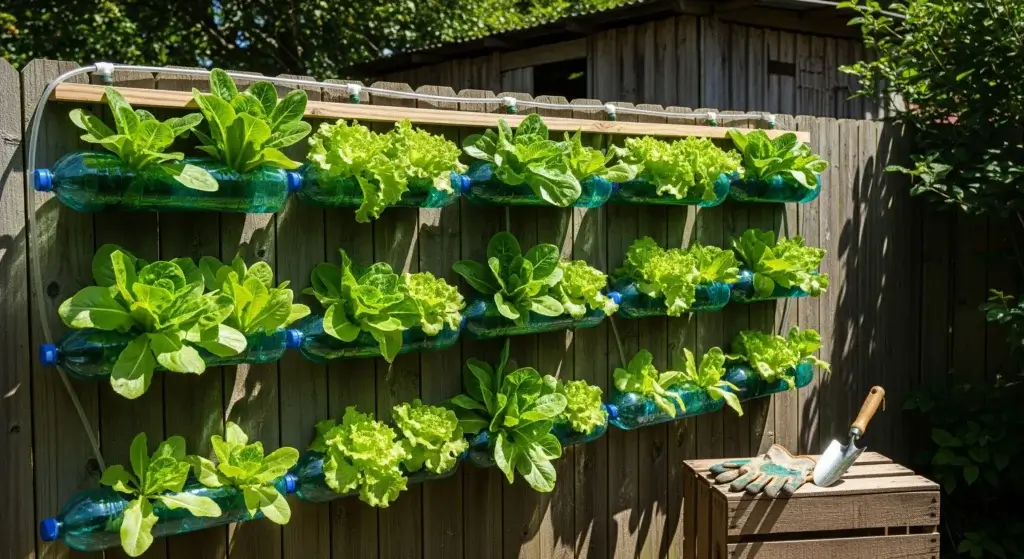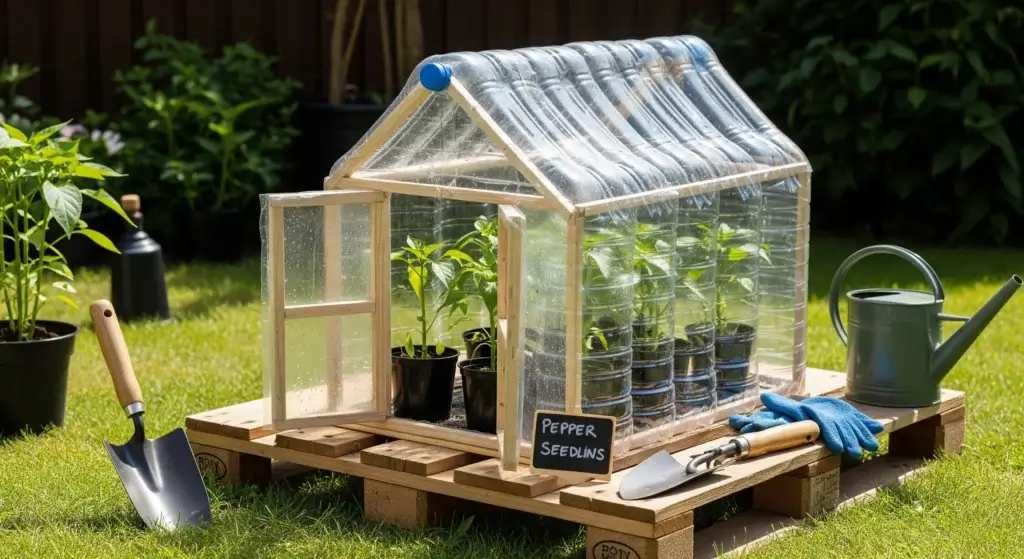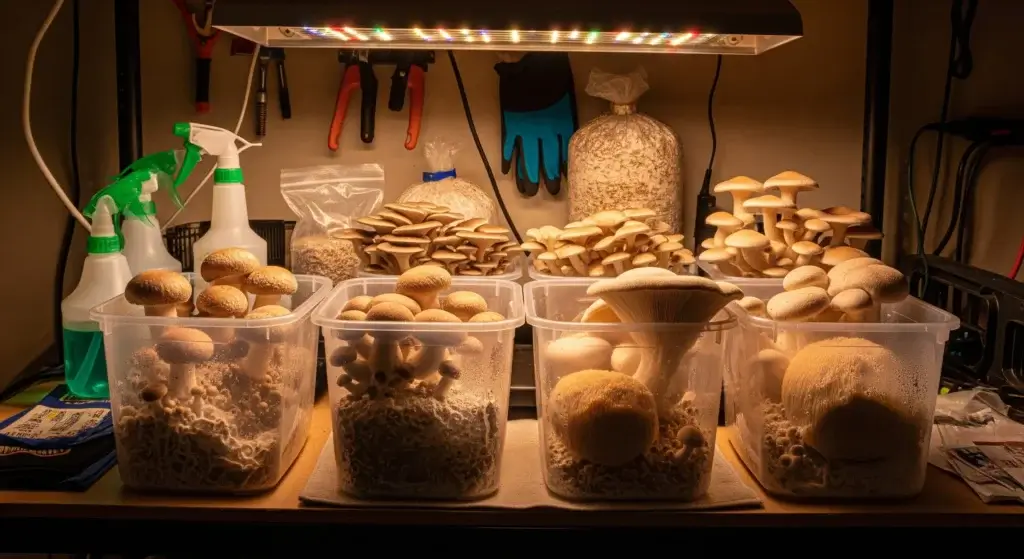
If you’ve noticed holes in your plant leaves or plants that look like they’ve been chewed on, you may be dealing with Japanese beetles.
These shiny, metallic-green pests are not only frustrating but can cause significant damage to gardens.
Rather than reaching for chemical solutions, many gardeners are opting for DIY homemade sprays.
These natural solutions are safer for the environment, your plants, and even beneficial insects.
Damage to Plants
Japanese beetles (Popillia japonica) are notorious for their plant-feeding habits.
Originally from Japan, they were first discovered in the U.S. in the early 1900s and have since become a major pest for gardeners across North America.
Adult beetles are about 1/2 inch long with a metallic-green body and copper-colored wings.
While they look small and harmless, these beetles can wreak havoc on your garden.
They feed on the leaves, flowers, and fruits of over 300 plant species, leaving behind skeletonized leaves that are easy to spot.
Their feeding creates holes in leaves, which can weaken plants and stunt their growth.
The larvae, or grubs, can also cause damage, feeding on the roots of grass and other plants, which can lead to brown patches in lawns.
Controlling Japanese beetles early is key to preventing widespread damage.
- Read also: Keeping Your Plants Safe: A DIY Guide to Spider Mite Spray
- Read also: DIY Solution: Homemade Plant Insect Spray for a Healthy Garden
Benefits of Using Homemade Sprays
Why choose a homemade Japanese beetle spray over commercial insecticides?
Here are some of the key benefits:
- Safe for the environment: Homemade sprays use natural ingredients, meaning they won’t harm the surrounding ecosystem, including beneficial insects like bees and ladybugs.
- Non-toxic for humans and pets: With no harmful chemicals, homemade sprays are safe to use around kids and pets.
- Cost-effective: You can make effective beetle spray with ingredients you probably already have at home, saving you money.
- Customizable: You can adjust the formula to your garden’s needs, experimenting with different natural ingredients to find what works best.
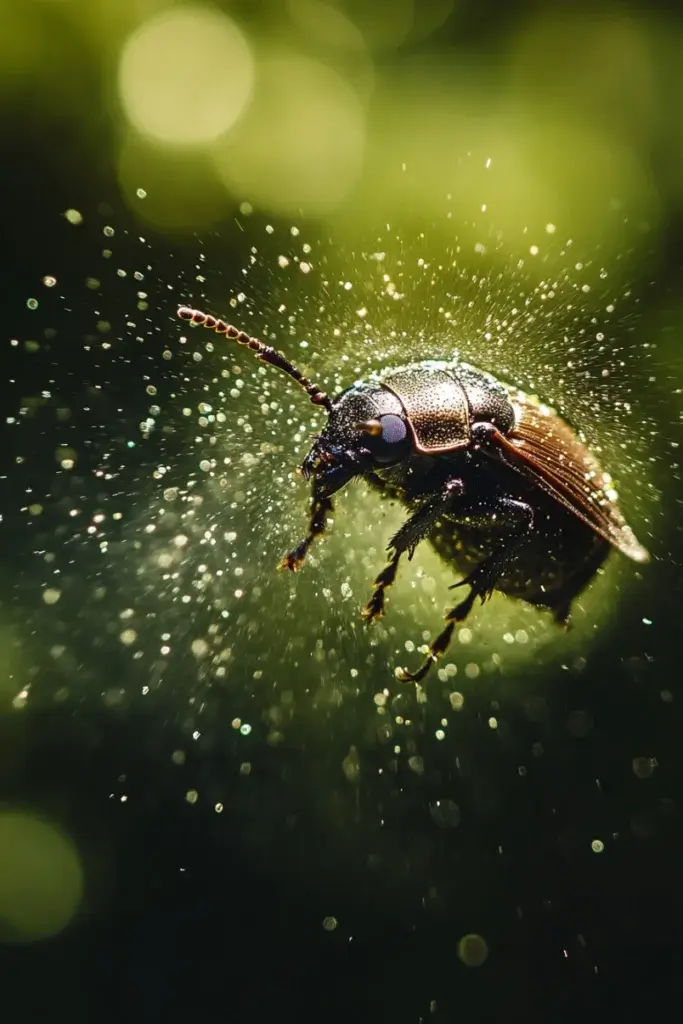
Make Homemade Japanese Beetle Spray
Making homemade Japanese beetle spray involves using various natural ingredients that are effective at deterring or killing these pests.
Here are several recipes based on different ingredients:
Neem oil spray
This spray uses neem oil, which interferes with insect hormone systems, preventing them from reproducing and eventually killing Japanese beetles.
Ingredients
- Neem oil: 1 teaspoon.
- Essential oils (peppermint or wintergreen): 25 drops each.
- Liquid dish soap: Squirt of Meyers dish soap.
- Water: Filled to ¾ capacity; topped with additional water leaving about an inch at the top.
Instructions
Step 1
Fill a bottle ¾ full with water.
Step 2
Add 1 teaspoon of neem oil, 25 drops each of peppermint essential oil, and wintergreen essential oil.
Step 3
Squirt some liquid dish soap into the mixture.
Step 4
Shake well before spraying onto plants in the morning or evening when the sun is less hot.
Peppermint essential oil spray
Peppermint oil repels Japanese beetles due to their sensitivity to strong scents.
Ingredients
- Peppermint essential oil: 10-15 drops per cup of water.
- Water: Cup(s).
Instructions
Step 1
Mix 10-15 drops of peppermint essential oil with 1 cup of water.
Step 2
Pour this mixture into a spray bottle.
Step 3
Spray liberally over affected areas, especially during early mornings or evenings.
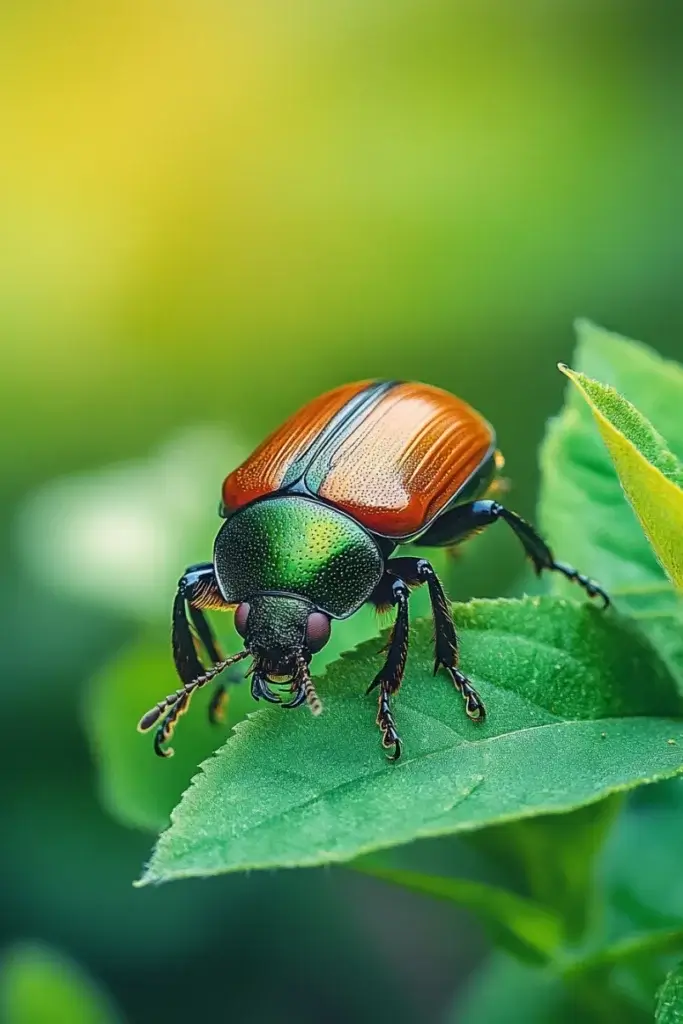
Dish soap spray
A simple yet effective solution that disrupts insects’ outer shells, making it difficult for them to move around3.
Ingredients
- Liquid castile soap: 1-2 tablespoons.
- Cooking oil (like Canola): 1-2 tablespoons.
- Water: Enough to fill the spray bottle.
Instructions
Step 1
Put 1-2 tablespoons of castile soap and cooking oil at the bottom of an empty spray bottle.
Step 2
Slowly add enough water to fill the rest of the bottle while avoiding excessive agitation.
Step 3
Spray the mixture generously on infested plants, ideally in the morning or evening.
Cedar wood steeping solution
Cedar wood contains oils that repel Japanese beetles effectively.
Ingredients
- Red cedar planks: Several planks immersed in hot water.
- Hot water: To steep the cedar planks.
Instructions
Step 1
Place several red cedar planks in a bucket filled with hot water.
Step 2
Let it steep for 24 hours.
Step 3
Strain the liquid and pour it into a sprayer.
Step 4
Spray directly on roses and other affected plants.
Spraying Techniques
Spraying your plants is one of the most effective ways to control Japanese beetles, but the timing, technique, and frequency are crucial for it to work properly.
Below is a detailed breakdown of how to spray your plants to protect them from these damaging pests.
When to spray
Timing plays a big role in how well the spray will work. Here’s when to spray for the best results:
- Early morning: Spray your plants in the early hours of the day. The air is cooler, and the beetles are usually less active. This ensures the spray has time to settle and coat the plants before it evaporates or dries too quickly.
- Late afternoon: If mornings aren’t possible, spraying in the late afternoon is also a good option. By this time, the sun isn’t as intense, and the temperature has dropped, which helps the spray last longer on the plants.
- Avoid midday heat: Spraying during the hottest part of the day (usually midday) should be avoided. High temperatures can cause the spray to evaporate quickly, making it less effective. Plus, the heat can stress your plants, and applying anything during this time could cause damage.
- Skip evening sprays: While it may seem convenient, spraying in the evening is not ideal. The moisture from the spray combined with overnight humidity can lead to mold or mildew growth on your plants.
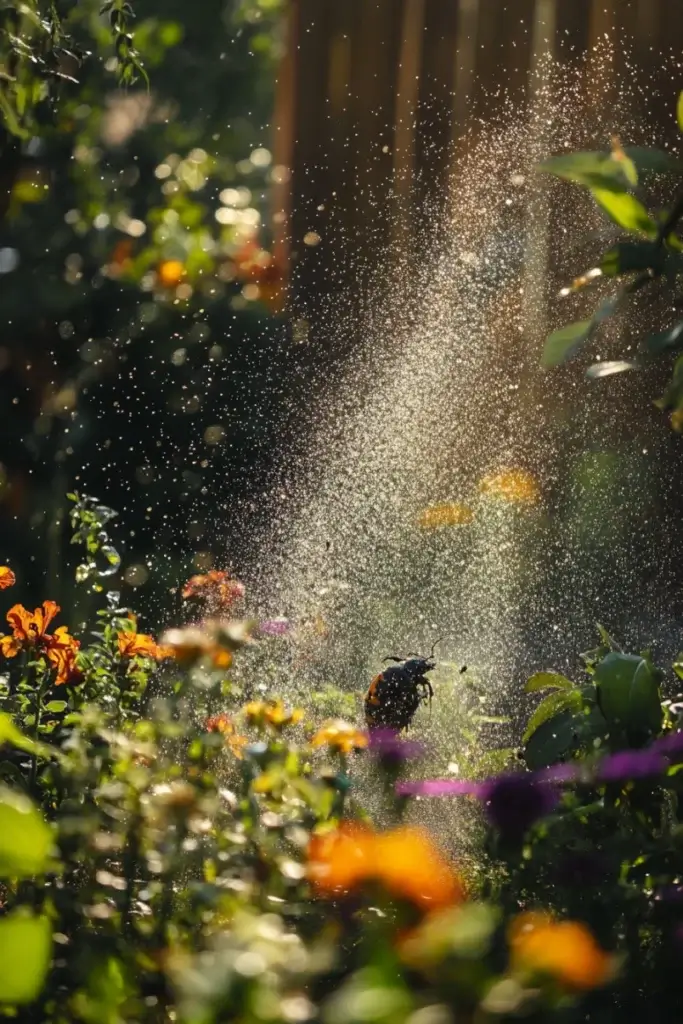
How to spray
Knowing the right technique to spray your plants will make a big difference in controlling Japanese beetles effectively.
Hold the spray bottle about 6 to 12 inches away from the plants.
This ensures that the spray covers a good portion of the plant without over-saturating it.
Japanese beetles can hide on both sides of leaves, so make sure to spray both the tops and undersides of the leaves.
They are especially good at hiding under leaves, so pay close attention to those areas.
The goal is to coat the leaves evenly without soaking them.
You want the spray to stay on the surface of the leaves where the beetles will come into contact with it, but over-wetting can cause runoff and waste the spray.
Don’t just spray the leaves; also aim for stems, flowers, and buds if needed, as beetles can damage all parts of the plant.
The more thoroughly you apply the spray, the more effective it will be at repelling or killing the beetles.
How often to spray
Keeping up with a regular spraying schedule is key to controlling Japanese beetles, especially during their peak season.
Reapply the spray every 3 to 4 days during the beetle season, usually from mid-June to August.
This ensures that there’s always a protective layer on your plants.
Rain can wash away the spray, making it ineffective.
If it rains, you’ll need to reapply the spray as soon as possible once the plants have dried.
Don’t spray wet plants, as this will dilute the solution and reduce its effectiveness.
Check your plants regularly for signs of beetle activity.
If you notice a resurgence, increase the frequency of your spraying to keep them at bay.
For heavily infested areas, you may need to spray more frequently.
Tips to spray
A few additional tips can help you maximize the effectiveness of your homemade spray:
- Test on a small area first: Before applying your spray all over, test it on a small section of one plant to make sure it doesn’t cause any damage or burning to the leaves.
- Wear gloves: Some of the ingredients, like garlic and cayenne pepper, can irritate your skin. Wearing gloves will protect your hands during the process.
- Spray in calm weather: Avoid spraying on windy days, as the wind can blow the spray away from the plants, wasting your mixture and reducing its effectiveness.
- Don’t forget the soil: In addition to the leaves, spray a bit around the base of the plants. This can help deter beetles from climbing up and feasting on your plants.
Effective Control Strategies
Here are a few extra tips to help you get the most out of your homemade beetle spray:
- Hand-picking beetles: In the early morning, when the beetles are less active, hand-pick them off your plants and drop them into a bucket of soapy water. This will kill them quickly.
- Companion planting: Consider planting flowers like marigolds or geraniums that repel Japanese beetles naturally.
- Trap plants: Grow sacrificial plants, such as raspberries or grapes, which attract beetles. This will draw them away from your main garden.
- Monitor regularly: Japanese beetles are persistent, so keep an eye on your garden and reapply the spray as needed.
- Stay organic: Avoid chemical sprays that can harm beneficial insects and upset the balance of your garden ecosystem.
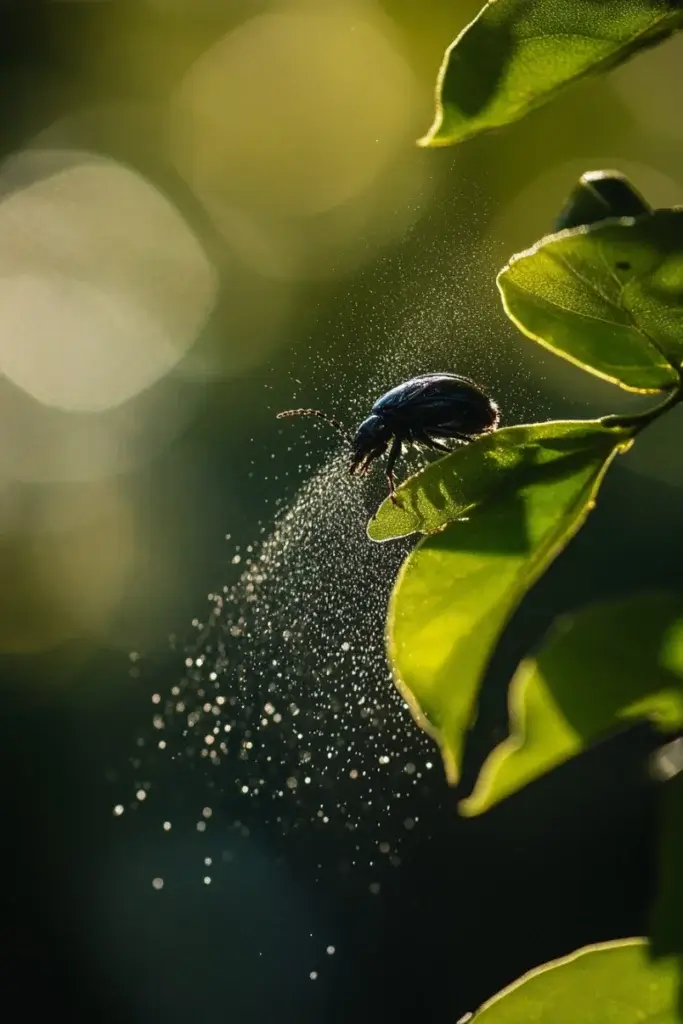
- Read also: Crafting Your Defense: Effective DIY Traps for Garden Pests
- Read also: Homemade Repellent: DIY Natural Pesticide Spray for Mosquitoes
Conclusion
Japanese beetles can be a headache for gardeners, but with a little effort, you can keep them under control using a homemade spray.
By using natural ingredients like garlic, dish soap, and neem oil, you’ll protect your plants in a safe, cost-effective, and environmentally friendly way.
Plus, this DIY solution lets you customize your approach and avoid harmful chemicals.
FAQs
No, if applied properly, homemade sprays typically target Japanese beetles without harming beneficial insects like bees or ladybugs.
You should start seeing results within a day or two after applying the spray. However, consistent reapplication may be necessary for the best control.
Yes, you can store it in a cool, dark place for up to two weeks. Just be sure to shake the bottle well before each use.
Japanese beetles are particularly fond of roses, beans, grapes, raspberries, and hibiscus, but they can attack many types of plants in your garden.

